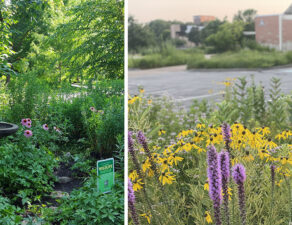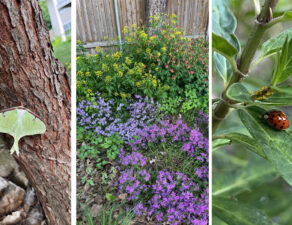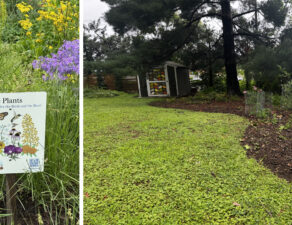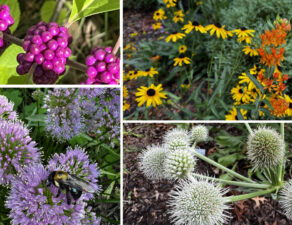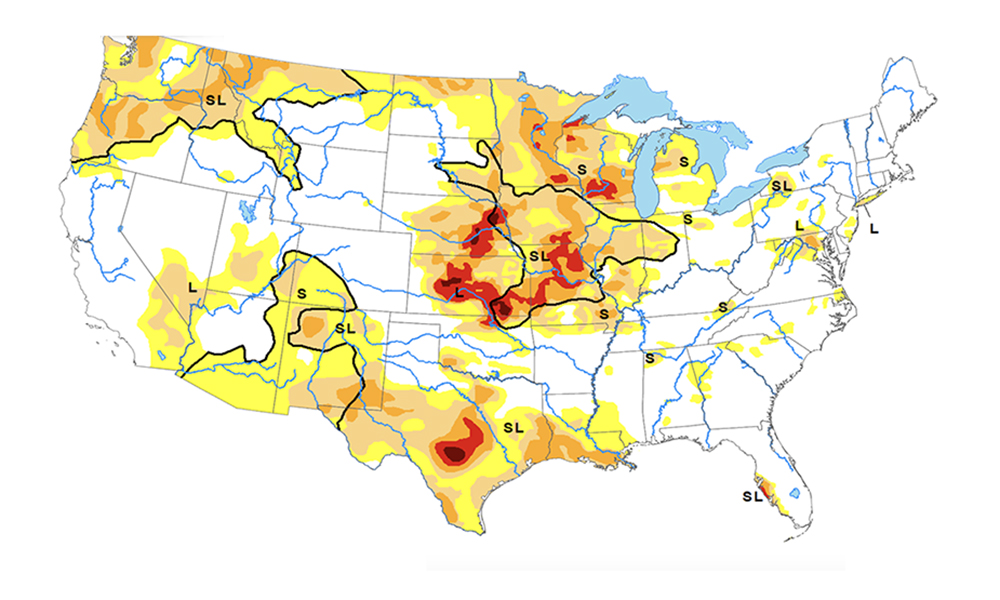
Written by Chris Cardwell, Photo Credit: National Drought Mitigation Center
Another Summer is ticking away in the lower Midwest, and yet another year of drought is prevailing across the North American continent. The University of Nebraska-Lincoln’s US Drought Monitor is showing large swaths of Kansas and Missouri experiencing various levels of drought, on a scale from “Abnormally Dry”, with below-average rainfall, to “Exceptional Drought” teetering on total crop failures and water infrastructure collapse. Nearly 30% of the country is experiencing drought, and the most severe conditions are here in our region.
But our native plant landscapes are evolved to be resilient and drought tolerant, right? True, but exceptional conditions require exceptional effort in watering to protect those landscapes in the long term, and trees in particular should receive a healthy dose of attention this season. While perennial forbs and grasses might brown out and enter dormancy during peak drought, they’re saving up resources for a strong return this fall, or next spring. But tree stress during drought can have lasting, even terminal effects that may not be totally evident for one or two years after the impact, and staying consistent with watering your landscape’s trees will help protect your investment and preserve critical keystone specimens – whether newly planted or mature and established.
Light, frequent watering is poor practice, especially for trees. But unfortunately, many Kansas Citians believe that their lawn sprinklers are sufficient for all their landscapes. The Morton Arboretum advises weekly watering, equivalent to 1-2” of rainfall, which can mean up to 10-15 minutes of slow hose watering per tree – no small-time commitment. For mature, established trees, the same applies every 2-3 weeks, and it’s critical to know that tree root zones can stretch 2-3 times the width of the drip line (where the canopy reaches). Trees experiencing drought stress will actually lose a portion of their fine hair-like roots that absorb moisture, meaning that even if a good rain does occur, only a fraction of it may be taken up into the plant, and it can take weeks or months to regrow their capacity.
Additional support can come from mulching the entire drip zone of the tree with leaf mulch, compost, or double ground mulches – more absorbent materials that help cool the soil and retain moisture for longer periods. And if you want a quicker way to avoid guessing when you’ve applied 2” of water, we recommend using tree watering bags which can be filled with up to 20 gallons that slowly percolates into the soil over several hours – an ideal approach to keep it consistent every week. With no relief from drought in sight, stay diligent and attentive in your landscapes this season to protect the keystones of your ecosystems.



